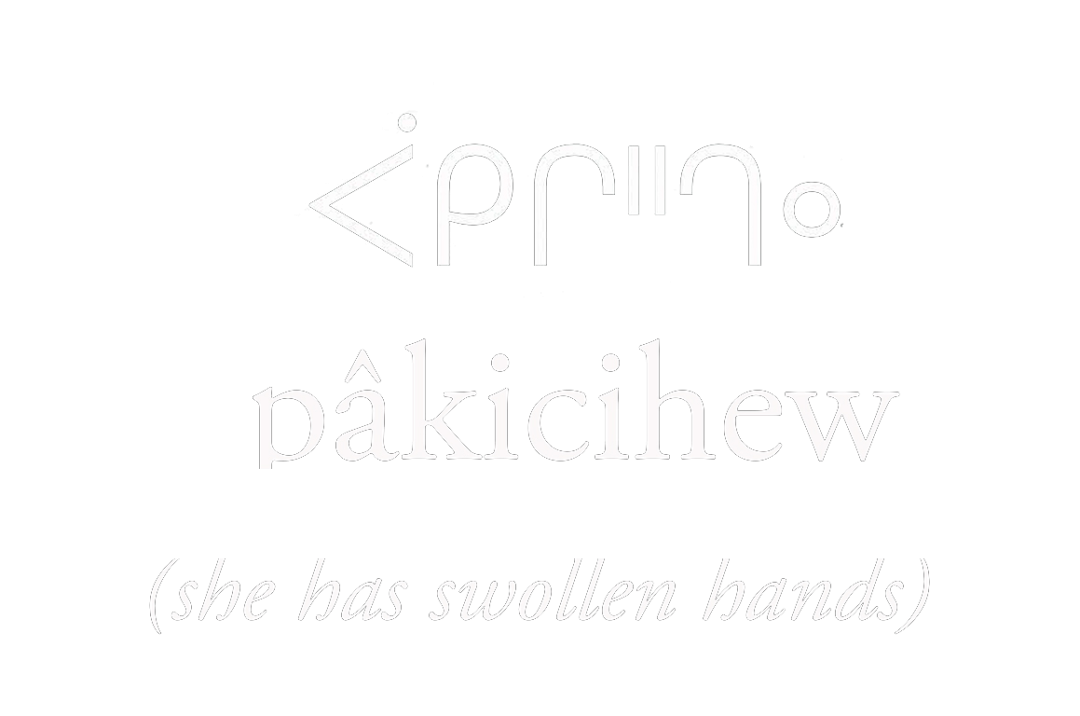Artist statement by bailey macabre
This exhibition features a 6-part series of cyanotype textile pieces centred around healing, grief, family, and intergenerational connection. These pieces are a meditation in trying to heal intergenerational trauma, move on from the loss of my grandmother, and process her existence as an entire person independent from her traumatic experiences.
What began as an exercise in sun exposure quickly became a foray into the role my grandmother had in our family and how her life existed independent of the trauma she faced. I used a lot of sacred medicines in the creation of these pieces and used them to smudge throughout my process. Other important cultural pieces like beads, dentalium, chaga, and abalone make appearances in these works, as well.
Sewing and textile work plays an important role in the purpose of these pieces as well - nôhkompan taught me how to sew, quilt, and knit. Not only do they speak to her in content and structure, but also throughout the entire creation of these works.
While creating these artworks, it truly felt like my grandmother was with me, guiding my hand as we made the pieces together. I never intended to create a piece about her residential school, but as I felt guided toward that subject, I recognized there is a way to move through the pain and create works that evoke healing and release - something I think nôhkompan benefits from.
These are immensely personal pieces imbued with love, patience, and understanding for a complex matriarch whose absence has been felt in our family in many various and shifting ways.
Curatorial statement by Amber R. Morrison.
bailey macabre's collection of artworks ᐹᑭᒋᐦᒉᐤ" pâkicihew (she has swollen hands) is a personal investigation of family, and yet it transcends a singular narrative, offering space to contemplate one’s own familial bonds and the larger contexts that shape them. Each of these pieces is visually striking, thoughtfully composed, and crafted with care.
This exhibition is a series of cyanotype textile artworks, each a meditation on healing, grief, family, and the enduring ties that bind generations together. The cyanotype process, which captures the ghostly forms of objects through the play of light and shadow, mirrors the way our memories are formed, imprinted with the indelible impressions of our ancestors. A zine, also made by the artist, acts as a guide to this collection as well as a keepsake. It contains helpful resources to services that support mental health and Indigenous wellness.
In the wake of Truth and Reconciliation Day, ᐹᑭᒋᐦᒉᐤ" pâkicihew (she has swollen hands) gives the public time and space to reflect on the larger national context that affected the fabric of families across this continent.
Through bailey's art, we are invited to connect with the legacy of colonialism and residential schools, to remember our own family narratives, and to find solace, joy, and celebration in the transformative power of creativity.

